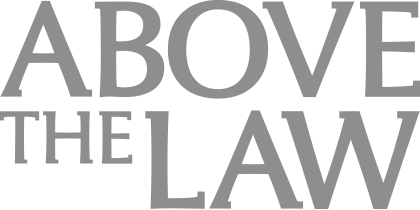In Search of a Feminine Feminism: Why Skirts Are the New Pants
Are skirts really the new pants? Professor Anna Akbari explains why that seems to be the case for professional women.
Ed. note: Professor Anna Akbari, a fashion and image consultant, recently provided Above the Law with style tips for Biglaw summer associates. Her advice provoked strong reactions around the web. In this post, she offers additional evidence and analysis to support her views on how professional women can achieve feminine feminism in the workplace.
Successful office dress is not about sex appeal. Overt sexiness — sky-high heels, short, tight skirts, low-cut blouses — is frowned upon, and is not rewarded in more conservative work environments like law firms (Peter Glick has studied this extensively). However, looking too masculine is also not rewarded or favored. It’s about finding a balance between the two, and understanding your audience (and remember, a sexy woman could wear a potato sack and still exude sex appeal, if that’s her intention).
Law firms — and judges, in particular — demand a different style of dress than more creative industries. In professional environments, one is always attempting to strike a balance between dressing to fit into the group, and dressing to express one’s self. It’s not one or the other, and the most successful individuals execute that split with impressive nuance. I like to refer to this balancing act as “rebellious compliance”: demonstrate that you belong, but find a way to distinguish yourself. To dismiss your professional appearance as frivolous or inconsequential is simply naive. Substance and style count.

AI Presents Both Opportunities And Risks For Lawyers. Are You Prepared?
And it counts even more for women, who are held to higher standards and judged more harshly based on appearance. That is an unfortunate reality….
When women first entered male-dominated professional fields, there was a sense that we had to dress like men to compete with them. This is no longer the case. However, some women may identify with a more androgynous style. If that’s your persona, then you should embrace that look. But for everyone else, embracing femininity in the workplace — in a tasteful, not overly sexualized way — can be quite powerful.
Several years ago, the paparazzi caught French politician Segolene Royal on the beach in a turquoise bikini. Her response to such attention: “Why should one have to be sad, ugly, and boring to go into politics?” We might ask the same question about women across all professional fields.
Sponsored


Curbing Client And Talent Loss With Productivity Tech

Generative AI at Work: Boosting e-Discovery Efficiency for Corporate Legal Teams

Law Firm Business Development Is More Than Relationship Building
Mary Lynn Damhorst has conducted multiple studies on the ideal business image for women. What has emerged from her work is the demand that women adhere to and effectively execute a confusing, frustrating mix of aesthetic attributes: conservatism and fashion, masculinity and femininity/sexuality, creativity and conformity. The implementation and presentation of these opposing elements requires daily precision and a circumspect balancing act that can only be described as exhausting.
The Great Pants vs. Skirts Debate
This issue, no doubt, will continue to divide men and women alike. We can argue that conservative men (i.e., judges and older male lawyers) view the skirt as more traditional, and therefore favor it (if only silently) over pants. We could also debate whether that means that women should play to that audience (not from a sex appeal perspective, but because they understand their audience and their preferences — however antiquated that preference may seem).
But first, here is some theoretical food for thought: Let’s examine the skirt and what it might represent. On one hand, you have someone like Thorstein Veblen (affiliate link) (who wrote at the turn of the 20th century) arguing that traditional objects of conspicuous leisure (i.e., skirts, heels, and other items that were seen as work “inhibitors” — though clearly a specific kind of work) help to designate the woman as the “chief ornament” of the household — the vicarious consumer and a symbol not of her own economic strength, but that of her husband:
The high heel, the skirt, the impracticable bonnet, the corset, and the general disregard of the wearer’s comfort which is an obvious feature of all civilized women’s apparel, are so many items of evidence to the effect that in the modern civilized scheme of life the woman is still, in theory, the economic dependent of the man – that, perhaps in a highly idealized sense, she still is the man’s chattel. The homely reason for all this conspicuous leisure and attire on the part of women lies in the fact that they are servants to whom, in the differentiation of economic functions, have been delegated the office of putting in evidence their master’s ability to pay.
Sponsored

AI Presents Both Opportunities And Risks For Lawyers. Are You Prepared?

Law Firm Business Development Is More Than Relationship Building
Veblen paints a rather grim picture of these items and their social significance. And then on the other hand, you have a more contemporary scholar, Anne Hollander, who, in Sex and Suits (affiliate link), challenges this reading of these garments — not only in the 21st century, but historically, using Catherine the Great and Elizabeth I as examples:
For those women, there is no question that their own sense of authority, and even of political and intellectual agility, was enhanced and supported by those clothes…. Such clothing certainly did not confine those queens to the sofa, nor their conversation to frivolities, nor did it perpetually encourage them to faint, nor to feel submissive and inactive. Nor, I would say, to feel uncomfortable. In fact, both the inward feeling and the outward aspect of persons in their situation, male or female, who preserve bodily decorum, mental energy and rhetorical skill, who maintain good temper and good manners along with the capacity to stand, sit and walk with majestic ease and to ride horseback and dance gracefully for hours, all while visibly transcending the constant challenge of such garments, are infused with the aura of power and triumph, not with the sense of submission to burdens.
Hollander’s viewpoint contradicts the idea that traditional objects of conspicuous leisure — like skirts — not only impair labor, but prohibit the wearer from seizing power. Thus, the clothing itself is neither a professional death sentence, nor does the wearing of such clothing necessarily position the woman in a subordinate position — in fact, according to Hollander, it is quite the opposite. The body, the context, and the particular combination of garments transcend any absolute semiotic reading of the items themselves. These variables take on different significance in each geographic and social situation, making it increasingly more difficult to effectively read and adapt visually.
Let’s consider some practical realities about pants vs. skirts in the workplace: Professional pants are consistently the most challenging item to purchase for my clients, and I repeatedly hear women complain that they struggle to find professional pants that fit them properly. It’s also very easy for them to look dated or ill-fitting/clingy, and truth be told, they accentuate a woman’s rear end and curves far more than the average skirt or dress (assuming the skirt and dress are not too tight). Though there are always exceptions, skirts tend to be easier to fit and flatter than pants. And if we want to examine them from a simplicity standpoint, dresses are the clear winner. There’s less to fuss with, and no need to match a blouse or worry about tucking anything in. It’s one piece, you put it on, and you look neat, together, and polished.
When it comes to interviews, skirt suits are simply the better choice when interviewing with more conservative firms — not because they’re going to titillate the male interviewers, but because they’re more traditional, and therefore generally favored. Does that mean you won’t get the job if you’re wearing pants? Certainly not. But if you feel comfortable in a skirt, then I’d wear it at least for the interview. Interview dress is important because it sets the tone for the applicant, though that exact look need not be repeated on a daily basis.
We’ll delve into heel height, beauty, makeup, and the many brands of feminism on the next page….







